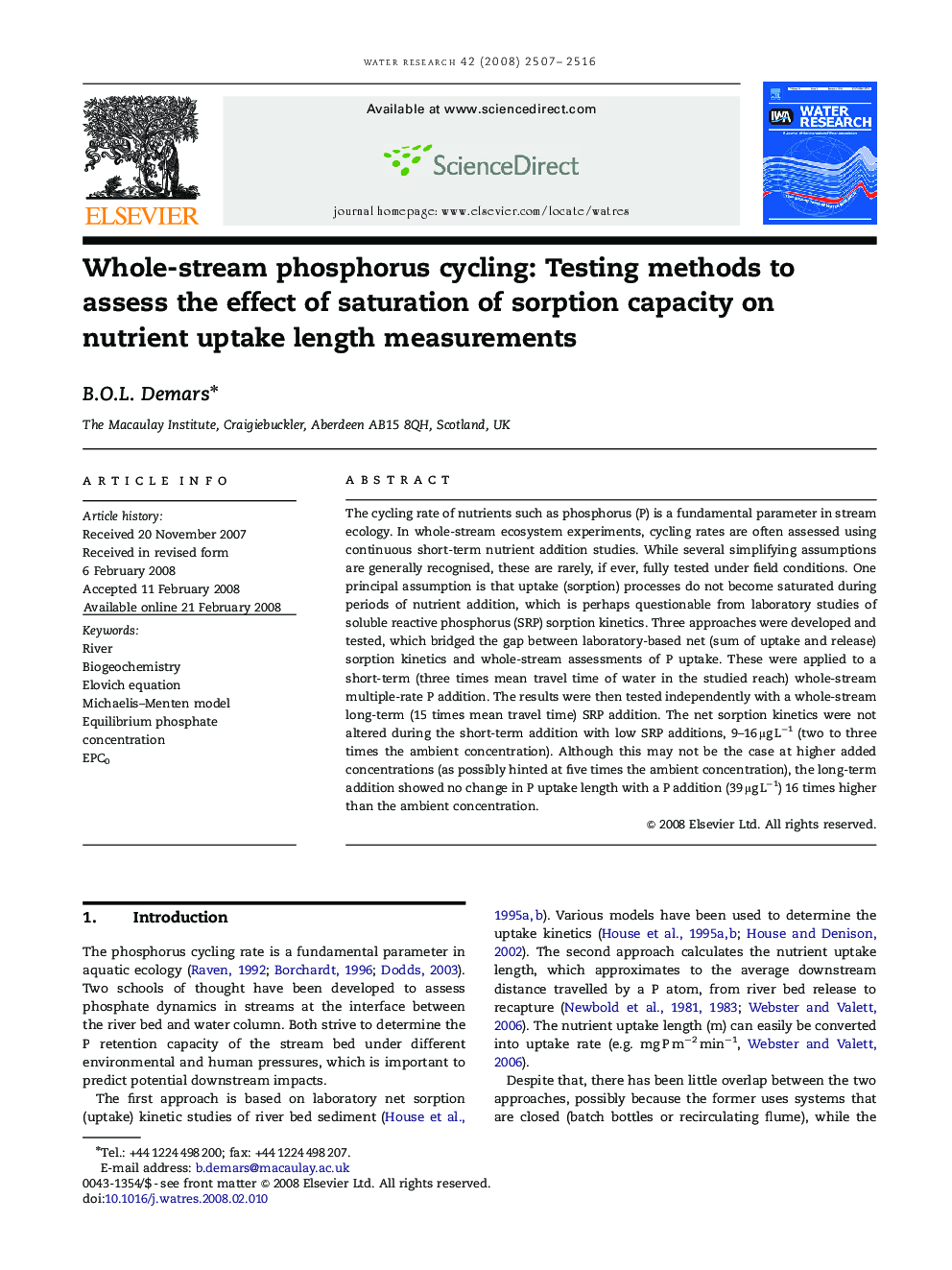| Article ID | Journal | Published Year | Pages | File Type |
|---|---|---|---|---|
| 4484762 | Water Research | 2008 | 10 Pages |
The cycling rate of nutrients such as phosphorus (P) is a fundamental parameter in stream ecology. In whole-stream ecosystem experiments, cycling rates are often assessed using continuous short-term nutrient addition studies. While several simplifying assumptions are generally recognised, these are rarely, if ever, fully tested under field conditions. One principal assumption is that uptake (sorption) processes do not become saturated during periods of nutrient addition, which is perhaps questionable from laboratory studies of soluble reactive phosphorus (SRP) sorption kinetics. Three approaches were developed and tested, which bridged the gap between laboratory-based net (sum of uptake and release) sorption kinetics and whole-stream assessments of P uptake. These were applied to a short-term (three times mean travel time of water in the studied reach) whole-stream multiple-rate P addition. The results were then tested independently with a whole-stream long-term (15 times mean travel time) SRP addition. The net sorption kinetics were not altered during the short-term addition with low SRP additions, 9–16 μg L−1 (two to three times the ambient concentration). Although this may not be the case at higher added concentrations (as possibly hinted at five times the ambient concentration), the long-term addition showed no change in P uptake length with a P addition (39 μg L−1) 16 times higher than the ambient concentration.
